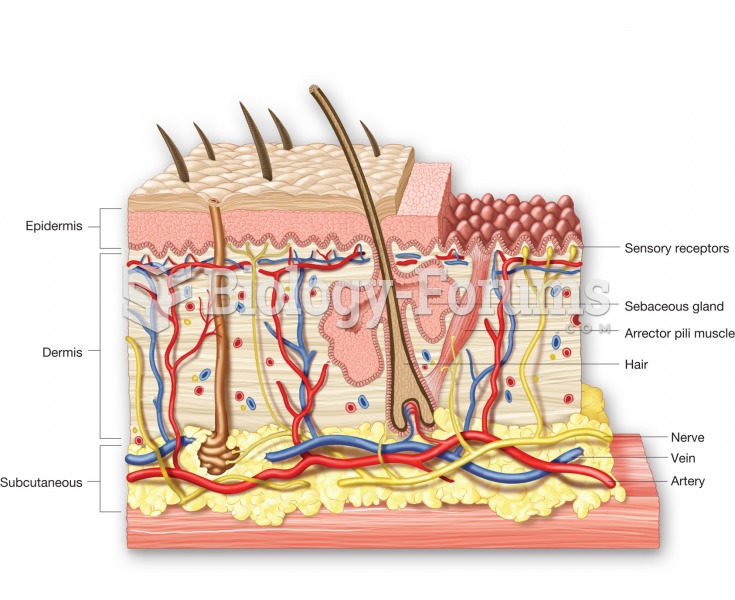Although hair color and texture are genetically determined, the condition of your hair may also be influenced by hormonal or environmental factors. As pigment production decreases with age the hair color lightens toward gray. White hair results from the presence of air bubbles within the hair shaft. Because the hair itself is quite dead and inert, changes in coloration are gradual. Unless bleach is used, it is not possible for hair to turn white overnight, as some horror stories would have us believe.
a. The hair itself is dead and inert so any real change in the hair must be produced by using artificial chemicals.
b. Although white hair is the result of air bubbles within the hair shaft, the hair can turn white overnight.
c. Hair color and texture are genetically determined but other conditions of the hair are influenced by hormonal or environmental factors.
d. Hair turns gray because the pigment production decreases with age.
Question 2
Inputs of solar energy drive atmospheric circulation, and thus climate. Changes in insolation could alter climate. Humans know little about variations in the amount of solar radiation reaching Earth, because it is difficult to observe the Sun through the filter of the atmosphere. Recent studies based on satellite observations of the Sun are beginning to suggest that variations in solar output could be responsible for some of the climatic variations observed in the last few hundred years and may have caused some of the warming of the twentieth century.
a. Recent studies using satellite observations suggest that solar output could be responsible for some of the climate variations and possibly global warming.
b. Global warming is directly caused by the variations of solar energy produced by the Sun.
c. Since solar energy affects atmospheric circulation, it is possible that it controls the climate worldwide.
d. Until recently humans have known very little about the Sun because of the dense atmosphere of the Earth.







